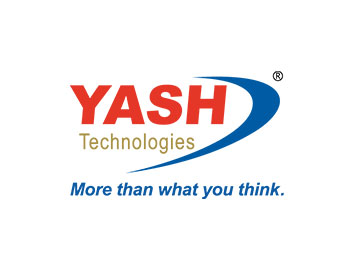
Find Your Perfect Job Match
Find Jobs, Employment & Career Opportunities

Latest Job Openings...
Know your worth and find the job that qualify your life
March 30, 2023
March 28, 2023
March 30, 2023
March 28, 2023
March 28, 2023
March 24, 2023
March 17, 2023
Immediate hiring for SAP BASIS Trainees | Exp: 0-1 year | Location: Mumbai (Thane) and Bangalore
Featured March 16, 2023
March 13, 2023
March 30, 2023
March 28, 2023
March 24, 2023
March 17, 2023
Immediate hiring for SAP BASIS Trainees | Exp: 0-1 year | Location: Mumbai (Thane) and Bangalore
Featured March 16, 2023
March 13, 2023
Other Jobs & Articles...
Opening for SAP SD, MM, FICO, Treasury Consultants | Exp: 5+ years
Great working opportunity for SAP resources at InfoVision. 1) SAP SDExp- 5+ Years. Mandatory German Language B1 Level.2) SAP MM.Exp- 5+ Years. Mandatory German ...
Senior SAP Consultants required in Egypt | Exp: 5-7 years
We are looking for talented SAP Consultants in multiple modules as listed below to join our team in Egypt, please send your CV to ...
Urgent Hiring For SAP SD Functional Consultant in MNC Companies | Exp: 0-2 years | Location: Pune
Skills: SAP SD Functional ConsultantExp: 0-2 yearsLocation: Pune Job description: SAP SD-BF (Basic Functions)SAP SD-MD ( Master Data)SAP SD-SLS (Sales)SAP SD-TBA (Transportation)SAP SD-SHP (shipping)SAP ...
SAP FICO Job Opening | Exp: 9-12 years | Location: Vijayawada
We have an immediate opening for the below positions. SAP FICO Looking for a very experienced Candidate in FICO.Should have implementation , Support/Rollout exp.Should ...
Deloitte is hiring for SAP SuccessFactors Consultants | Exp: 3-8 years | Virtual Mega Drive on 19th Feb 2023
Deloitte is on the search for Game Changers who are hungry to learn, build & grow! Come make your mark on our team, clients, ...
Opening for SAP Support Analyst | Exp: 3-5 years | Location: Thailand
Looking for IT-SAP Support Analyst 3-5 years of experience in SAP Change Management Process & SAP Incident Management.SAP Solution Manager. JD :Joins Integration network ...
Immediate Requirement for SAP NATIVE HANA with SAC Candidates | Exp: 3+ years
We have an immediate requirement for SAP NATIVE HANA with SAC candidates . Candidates with 3+ years of experience can share their resume on ...
Hiring for SAP Business Analyst / PMO | Exp: 2-4 years | Location: Bangalore
Greetings From Infosight We are hiring for Business Analyst / PMO to Bangalore Location – Work from Office Skill : Business Analyst / PMO[SAP ...
Opening for SAP IS-Retail Consultants | Exp: 5+ years | Location: Dubai
SAVIC Inc is hiring. Job Title: SAP IS-Retail ConsultantRelevant Experience: 5+ Years.Location : DubaiWork from office. Roles and responsibilities: Implement and configure SAP IS ...
Urgent Opening for SAP ABAP Testers | Exp: 2-4 years | Location: Chennai
Urgent opening for one of the biggest MNC!!! Locations :- ChennaiExperience:- 2-4 years profile:-SAP ABAPAPI TESTINGautomation testingtesting (java, sql, Linux and service now) Interested ...
Hiring for SAP WM Consultant | Exp: 8+ years | Remote
Hiring for SAP WM Consultant… Exp : 8+ yearsLocation : Remote Can share cvs at [email protected]
Excellent Opportunity for SAP FI Experts | Exp: 10+ years | Remote (PAN India)
Greetings from Aequor!! We have an excellent opportunity for SAP experts with S4 hana in multiple modules :- Experience : Relevant in 10+ years ...
Register an account
to start
Achieve virtually any design and layout from within the one template.
Explore over thousands
of resumes
Achieve virtually any design and layout from within the one template.
Find the most suitable
Employer
Achieve virtually any design and layout from within the one template.
Make Recruiting Your Competitive Advantage
SAP Openings offers a way to completely optimize your entire recruiting process. Find better candidates, conduct more focused interviews, and make data-driven hiring decisions.
Top Companies Registered
Some of the companies we’ve helped recruit excellent applicants over the years.
What our team say
Out team members are very enthusiastic with Lots of Innovative Ideas.

Advanced Job Search Engine
SAP Openings is an advanced job search engine specifically designed for SAP field in order to help job seekers and recruiters in better way by providing many important features for quick & quality outcome.
Dimpal Gohil
Founder & CEO

Perfect Features
Without SAP Openings I’d be homeless, they found me a job and got me sorted out quickly with everything! Can’t quite… Back-end team works really hard to ensure high level of quality. Thanks a lot for this great innovation.
Nicole Wells
Web Developer

Awesome Design
Design is very important for look and feel of the contents shared over any website. I am proud we have such a wonderful website designed so very well which helps everyone to find right things very easily.
Ronald Richards
Designer

















